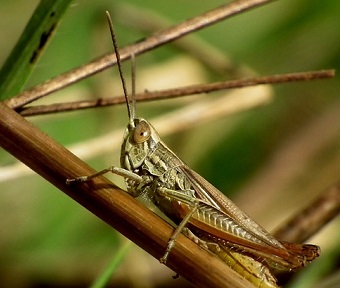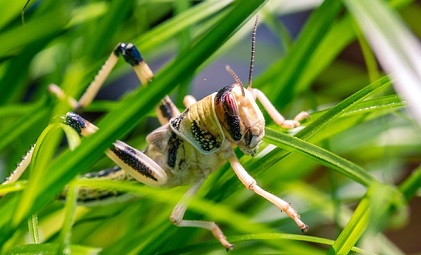Living Planet
Nature · Earth · ClimateA Frightening Feast
Billions of Desert Locusts sweep East Africa in Biblical proportions ...
The United Nations have issued a warning about the number of desert locusts currently devouring East Africa in numbers not seen in decades.
Unseasonal cylones have been depositing huge amounts of water on the Arabian peninsula creating the perfect breeding conditions. They have already travelled from the Yemen through Ethiopia, Somalia and Kenya where they've devastated crops and livelihoods, and at the time of writing (mid Feb 2020) they have now reached Uganda and Tanzania.
Each locust eats its body weight every day and when a single desert locust lives alone it does relatively little damage. In this environment it is of a brown hue. However, the desert locust is in fact named Schistocerca gregaria for its tendency to socialize and when environmental conditions produce many green plants and breeding rates increase, locusts congregate into ravenous swarms and change colour to a striking yellow and black. Kenyans sometimes describe these clouds as "the teeth of the wind". One recent swarm in Kenya measured 37 miles long and 25 miles wide and they can fly up to 80 miles a day. It's estimated that even a 1km swarm can devour enough food for 35,000 people daily and the East African region could be on the verge of a humanitarian crisis.


Female locusts only lay their eggs when the ground is damp but the next rainy season in Eastern Africa begins in March. She will lay about 80 eggs which usually hatch within two weeks. They then grow through various stages to maturity and after around 2- 4 months the cycle starts again. The UN is warning that by the time the weather dries up again in June, the current population of desert locusts could multiply by a factor of 500.
"The scale of the problems is enormous", one Kenyan reporter told Channel 4 news, "As the plagues of locusts multiply, East Africa is now facing a problem of Biblical proportions. Divine intervention may be the only salvation."